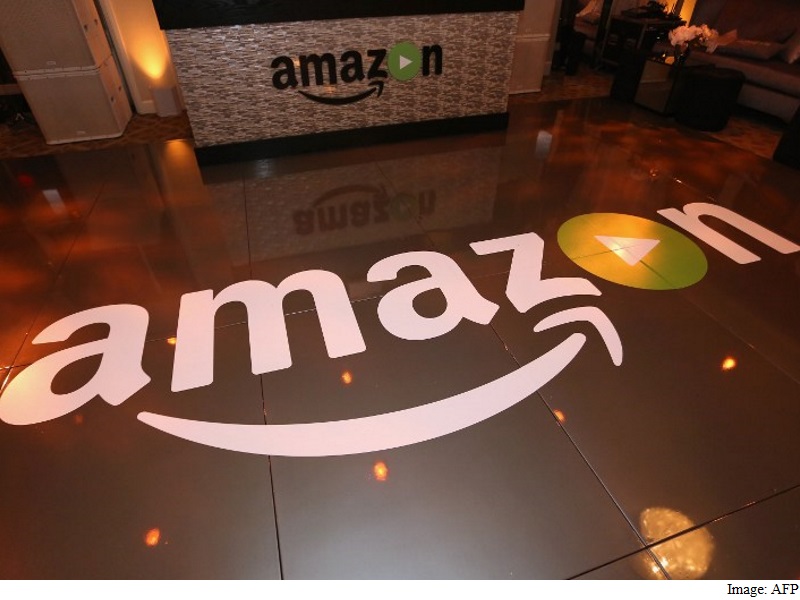- Home
- Internet
- Internet News
- Amazon Prime, Prime Video Now Available as Monthly Subscriptions
Amazon Prime, Prime Video Now Available as Monthly Subscriptions

First, Amazon is making its streaming video service, Prime Video, available monthly for $8.99. That's a dollar less than what Netflix charges per month for its standard price tier.
Second, Amazon is making it possible to pay for a full Amazon Prime subscription on a monthly basis at $10.99 a month. For folks who've balked at Amazon Prime's yearly $99 price tag, the change means more flexibility to use Prime on a short-term basis.
(Amazon chief executive Jeffrey P. Bezos also owns The Washington Post.)
Breaking Prime Video out as a separate product seems clearly aimed at capturing the ever-expanding market for streaming video. Together, Netflix and YouTube account for over half of all Internet consumption, according to Sandvine. Throw in streaming audio, and that figure jumps to 70 percent.
Amazon wants to muscle its way in there, too, but so far its share of North American Internet traffic stands at just 3 percent.
With experiments in original video such as "The Man in the High Castle," Amazon is building the kind of exclusive content war chest that any Internet and media giant now needs to set itself apart. And in appealing directly to cord-cutters and Internet streamers with a standalone offering, Amazon seems poised for a head-to-head fight with Netflix. But what also makes this move so interesting is that it helps shed some light on the way Amazon thinks about pricing.
One of the first things you'll notice about this week's changes is that Prime monthly is only $2 a month more expensive than standalone Prime Video. On its face, this suggests a huge discrepancy between Prime Video and all the other features you get as a Prime member, such as free two-day shipping, unlimited photo storage in the cloud and so on. Are the logistics behind Amazon shipping, the music licensing that gives you access to streaming music and all the negotiations with publishers for ebooks really only worth $24 a year per user?
There could be a few explanations for this. First, Amazon may be trying to use video simply to acquire more Prime subscribers, whose number currently stands at an estimated 54 million. The message would be, essentially: Come for the video, stay for all our instant-gratification retail goodness. Upselling standalone Prime Video subscribers to full Prime memberships would mean locking those new customers into the habit of buying nearly everything from Amazon, as many Americans have found themselves doing.
Here's another way to look at: All the non-video benefits of Prime are worth way more than $24 a year, but it's important to Amazon's brand to make ebooks and free shipping look cheap and easy, which is why even though it might cost Amazon more to provide those services, they're being given to consumers at a loss. This would be consistent with Bezos's overarching strategy. When the Kindle first debuted, for example, it was sold at cost, and Amazon made no profits on sales of the device. But in the long run, Amazon makes it all back when Prime customers spend more money buying things on Amazon than non-subscribers.
Finally, there's an important competitive reason why standalone Prime Video is priced as it is. It all comes back to that original point about Netflix. Because Amazon is going after Netflix, it can't afford to set the price much lower without sending the unintended message that perhaps Prime Video is an inferior product. So while monthly Prime Video is a slightly better deal than Netflix, reflecting its relatively lower profile and content selection, it's not dramatically cheaper by comparison, either.
© 2016 The Washington Post
Get your daily dose of tech news, reviews, and insights, in under 80 characters on Gadgets 360 Turbo. Connect with fellow tech lovers on our Forum. Follow us on X, Facebook, WhatsApp, Threads and Google News for instant updates. Catch all the action on our YouTube channel.
Related Stories
- Samsung Galaxy Unpacked 2025
- ChatGPT
- Redmi Note 14 Pro+
- iPhone 16
- Apple Vision Pro
- Oneplus 12
- OnePlus Nord CE 3 Lite 5G
- iPhone 13
- Xiaomi 14 Pro
- Oppo Find N3
- Tecno Spark Go (2023)
- Realme V30
- Best Phones Under 25000
- Samsung Galaxy S24 Series
- Cryptocurrency
- iQoo 12
- Samsung Galaxy S24 Ultra
- Giottus
- Samsung Galaxy Z Flip 5
- Apple 'Scary Fast'
- Housefull 5
- GoPro Hero 12 Black Review
- Invincible Season 2
- JioGlass
- HD Ready TV
- Laptop Under 50000
- Smartwatch Under 10000
- Latest Mobile Phones
- Compare Phones
- Realme P4x 5G
- OnePlus Ace 6T
- OPPO A6x 5G
- Samsung Galaxy Z TriFold
- Poco F8 Ultra
- Poco F8 Pro
- Huawei Mate 80 RS Master Edition
- Huawei Mate 80 Pro Max
- Asus ProArt P16
- MacBook Pro 14-inch (M5, 2025)
- Poco Pad M1
- Poco Pad X1
- Just Corseca Skywatch Pro
- Honor Watch X5
- Acerpure Nitro Z Series 100-inch QLED TV
- Samsung 43 Inch LED Ultra HD (4K) Smart TV (UA43UE81AFULXL)
- Asus ROG Ally
- Nintendo Switch Lite
- Haier 1.6 Ton 5 Star Inverter Split AC (HSU19G-MZAID5BN-INV)
- Haier 1.6 Ton 5 Star Inverter Split AC (HSU19G-MZAIM5BN-INV)

















